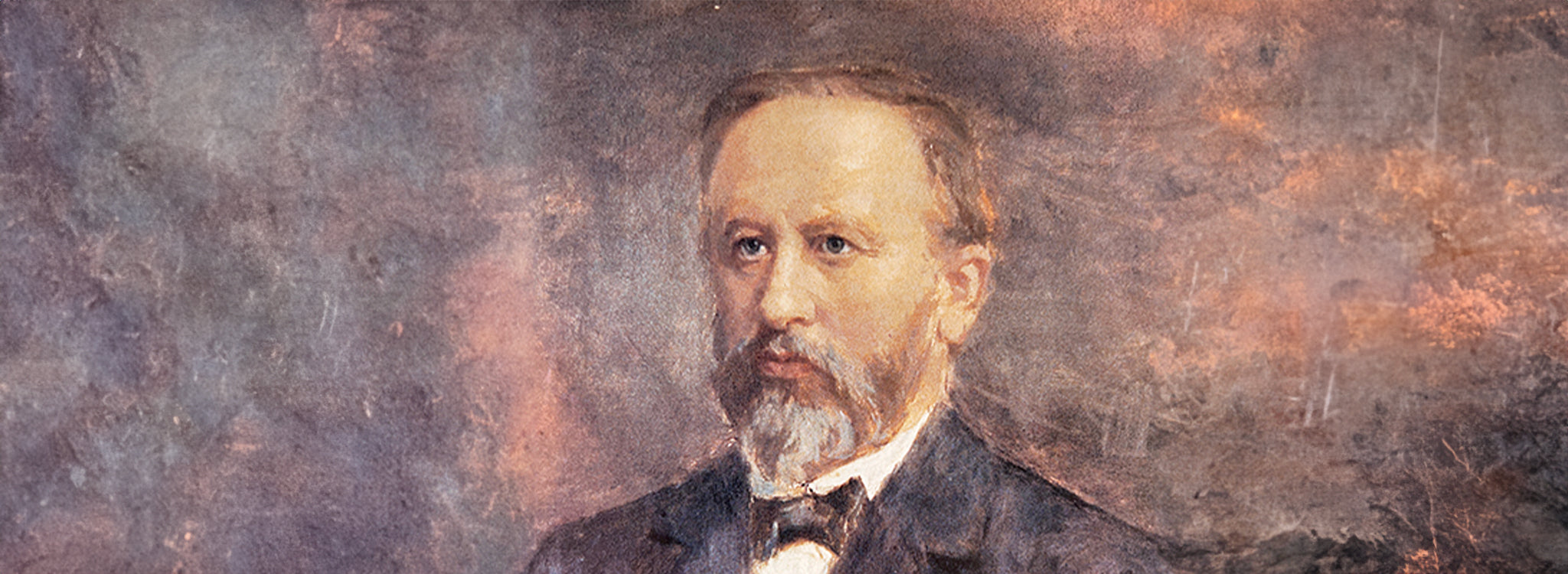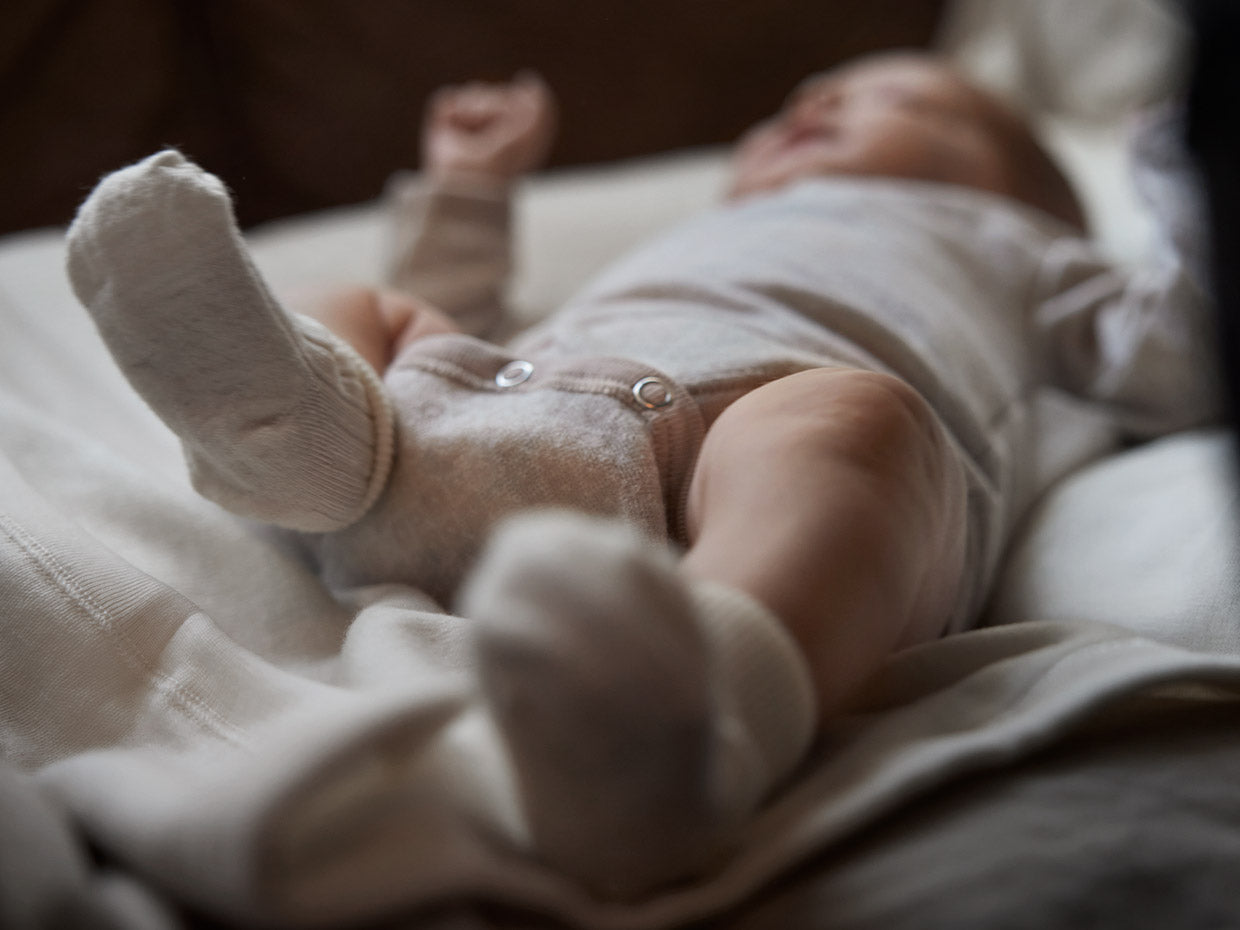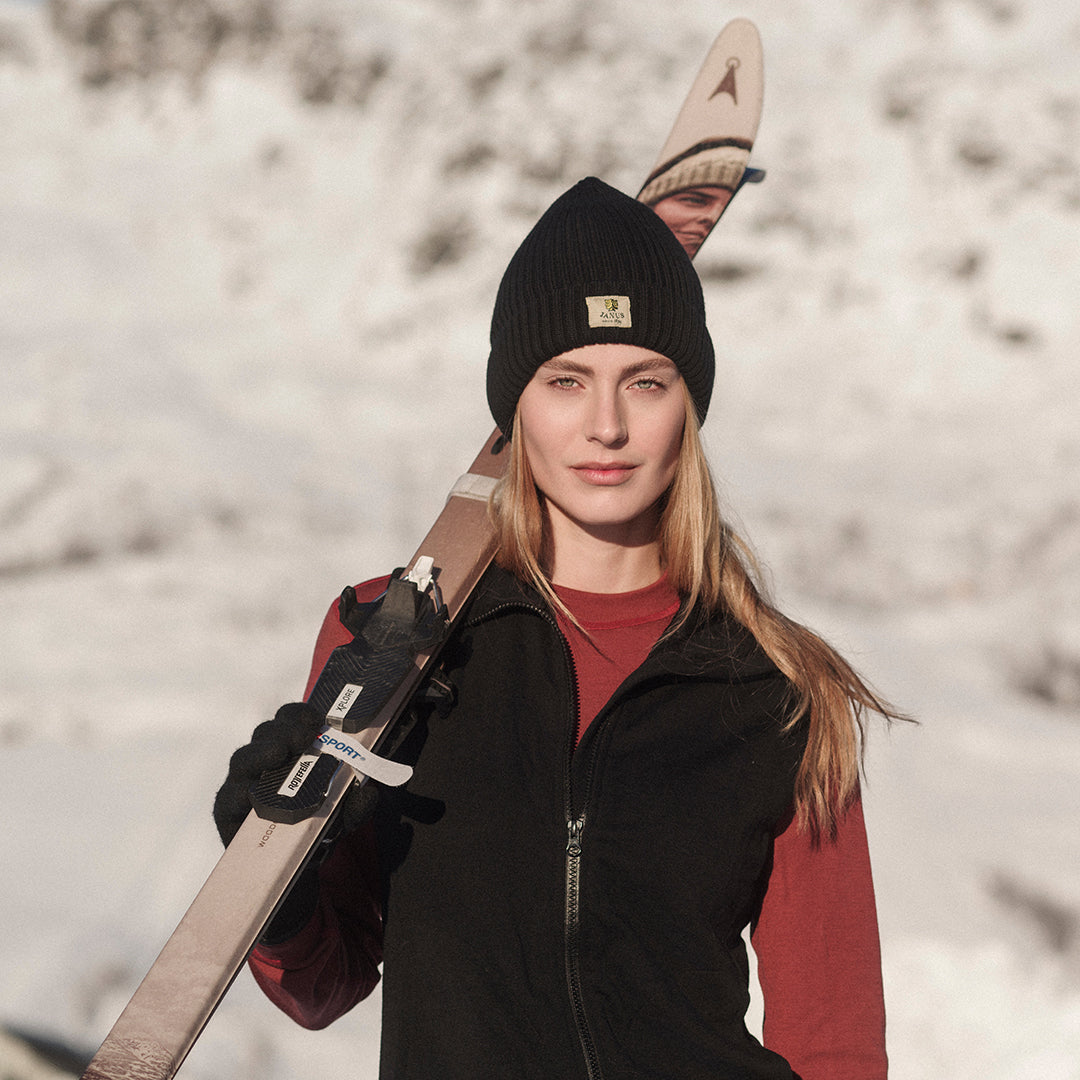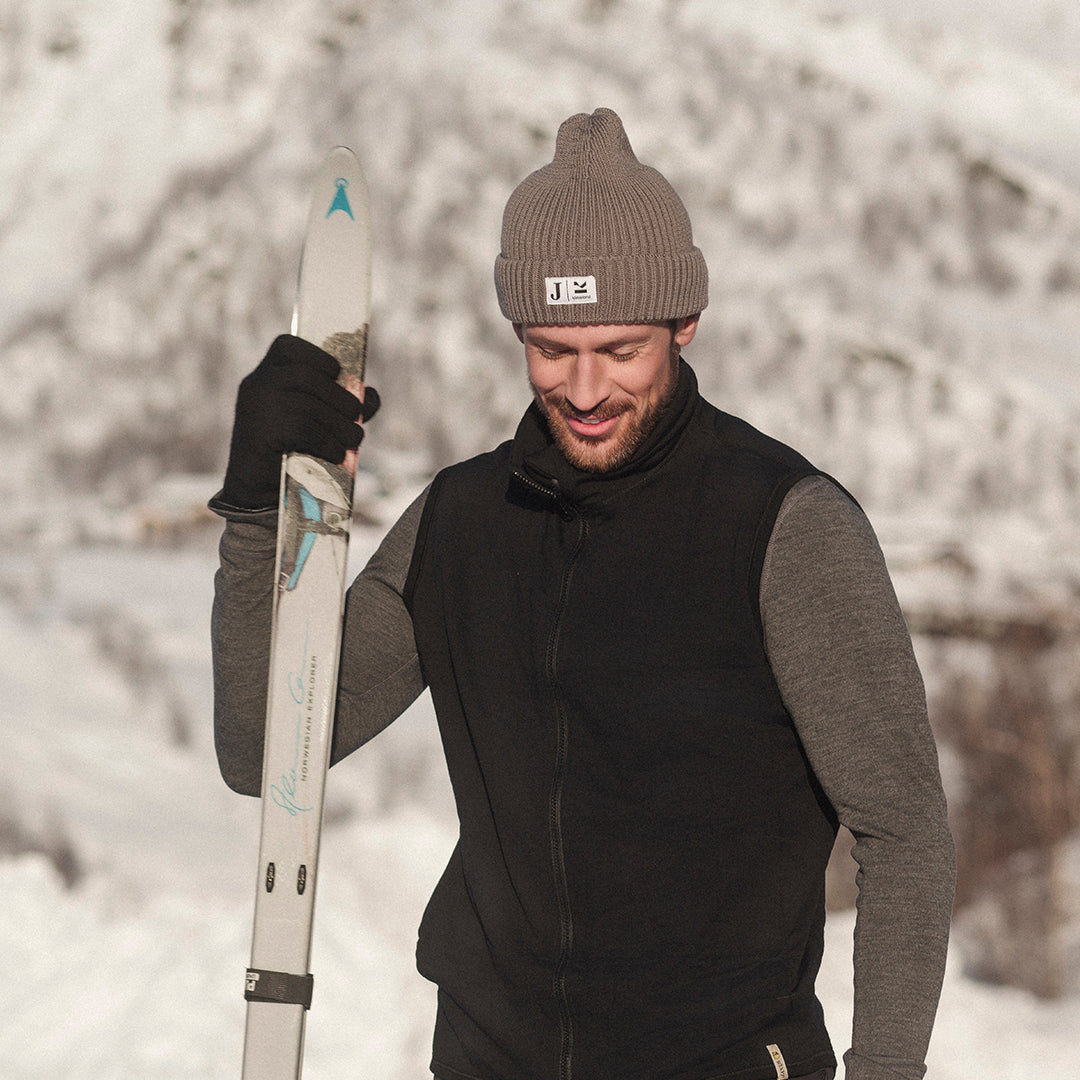THE FOUNDER
A sensible adventurer
A thought. That's how it all started. Not the kind of thought that suddenly pops into your head in a creative moment, surprising like a smile from an enemy. No, this was one of those thoughts that comes to mind. It stealthily sneaks up on you, from behind or from the side, then disappears the next moment. When it comes back, you hear it a little better. It has grown and the steps are heard more clearly. At regular intervals, the tank comes to visit. Soon the idea has shoes on, yes, soon it stomps on you with galoshes. Now you simply can't help but either hear or see it, and you are forced to make a decision: Either the idea must be put into practice, or you must forget it forever.
This was roughly the case for Anton Stephan Stephansen and the idea of building a factory at the end of the 18th century. He had operated as a merchant in his own clothing store for 25 years. He himself had turned 50 years old. And now the time had come: the dream of a knitwear factory had to be brought to life. But in the same way that the dream gradually grew, the actual implementation of the idea also proceeded with small and well-considered steps.
No one knows how long he had been tinkering with the idea. Who knows, perhaps the seed was already sown when he himself worked as an apprentice and disc jockey at Peder Jebsen's manufacturing shop in Strandgaten. But it may also have been later, when Stephansen was employed as a journeyman at Arne Fabrikker, in Ytre-Arna outside Bergen. There he got to see up close how the machines conjured up both threads and fabrics. And when he later started his own business on the corner of Smørsalmenningen and Strandgaten, he was no more stingy than to set a couple of hand knitting machines to spin and walk in the shop. At the same time, he became an agent for the sale of similar machines to others.
Now or never
As things progressed, he installed many different machines in the business. Soon the entire attic floor was furnished as a miniature factory. Here there were both a knitting shop and a sewing room. The goods that the machines produced were sold in the shop. The hissing from the machines went on steadily, and that probably gave Stephansen some satisfaction. But one thing he knew in his heart: He would fall short of the manual power that operated the machines, if his dream of a larger knitwear factory were to become reality. Other forces of nature had to be used.
A plan to buy a waterfall was always present with him. But Stephansen displaced it for financial reasons. He always hoped that the return on the business would increase to the point that he could make investments without much risk
Willing bodies of water
Stephansen knew that it could not be just any stream for the purpose he sought. But he also knew that the investment must not be too large. He needed the capital for the construction and start-up of the factory. With this in mind he set out in search of willing bodies of water. He did not rely solely on his own judgment when it came to the waterfall. That is why he asked his wife Geche to accompany him when he traveled on inspections of rivers and rapids. Mrs Stephansen, née Jahn, was from an old business family on both her mother's and father's side. She therefore had a distinct sense and flair for business. So Gerche's opinion was highly respected by the man Anton Stephan. They didn't travel far from Bergen to look for the waterfall. Stephansen wanted the factory to be located near the city. In the first instance, they did not find any place that was particularly suitable for factory operations. But it would turn out that they didn't see the forest for the trees.
Past the place Espeland, in Arna outside Bergen, a river meandered, with the name Bjordalselven. In places the river overflowed into waterfalls and rapids, but never in such a way that it attracted any kind of attention, neither from tourists nor from people who lived on the farms along the river. When the railway from Bergen to Voss was built, it passed just past these rapids. The highway did the same. But other than a resting place for the eyes of passers-by, the bodies of water never seemed to stay. Not before Stephansen cast his eyes on the untamed bodies of water in Espelandsfossen.
Falling for the waterfall
It was after a trip to Samnanger that Stephansen and his wife met factory owner Johan Jebsen. They started talking about the search for a suitable waterfall for factory purposes, and Jebsen tipped them off about Espelandsfossen. Stephansen was now literally getting water at the mill, and after taking a closer look at the waterfall, he contacted the landowner, Nils K. Espeland.
He was willing to sell, if only the price was right. Stephansen settled for this, not least because he was missing an important piece of the puzzle: He needed a skilled foreman and foreman at the factory. He knew a man with experience from the industry, Anders Lone. But he had retired to a farm in his home village, and was no longer keen to undertake the task. He thought he was getting too old. But Stephansen did not give up, and after some persuasion he got him on the sheet music.
Sued by river owners
The purchase of the waterfall could now be implemented. Twelve hundred kroner was the price for five acres of land, including the waterfall. Both parties were satisfied with this trade.
Buying the waterfall was all well and good. But Stephansen also needed damming rights for the bodies of water. And the dam had to be located in Osevannet, which belonged to the farm Bjorndal. The damming right was arranged by entering into a contract with the owners of Bjørdalsgården. When this was arranged, the future factory owner immediately set about building the dam. In parallel, the construction of the grounds for the knitwear factory itself took place.
But when the users of the farms with owners in the river heard that the farmers in Bjørndalen had sold the dam right, they went to court against both the buyer and the seller. Stephansen did not see that he had committed any wrongdoing, so he continued building one of the dams. Later it turned out that the plaintiff lost both in the lower and upper courts.
The turbines thunder
An important milestone had now been reached, the waterfall had been purchased and the energy supply secured. But much still remained before the turbines could be started. Stephansen himself traveled to Germany to look at and buy machines for the factory. He also had to familiarize himself with the preparation of yarn and gain in-depth knowledge of the types of goods and raw materials he used in production. In the shortest possible time, he now had to gain an in-depth insight into the intricacies of the modern knitwear business.
When Stephansen returned from Germany, with his pockets full of knowledge and technology, the work to build the factory was well advanced. Slowly but surely, he is now seeing his life's work rise. At the same time as the factory is taking shape, another important work is underway, namely to complete the house that will become the Stephansen family's home.
On 25 March 1895, the turbines begin to rumble, and Espelandsfossen's spinning mill and knitting factory are up and running. There is a fairly modest selection of machines to begin with, but enough to get production started. There are no electric sewing machines for sewing clothes. So in the early days, all seamstresses were using hand sewing machines. At the opening of the factory, twenty people are working. The factory itself and the machines represented an investment of NOK 60,000.
The private residence is erected
At the end of January 1895, the work on the private house is finished and they can move in. The home itself is both nicely and practically furnished. Built on a mountain, it is in a great location, with a good view through the narrow valley. From the country road, there is a private road leading to the house.
All so well. But all around the house it looked like anything but the Garden of Eden. It is said about Espeland that God was almost out of good things when he created the place. In other words, lushness and fertility are not what meet the settlers. But the settlers already knew this. The solution was to make use of the excavated soil from the site for the factory. It filled in the worst holes and covered the most screamingly cramped areas around the house.
The village lady Gerche Stephansen was no worse for it than that she took the children and collected dung from the cows that grazed on the fields and used it as fertilizer for the plants. Out with a wheelbarrow and spade it was carried. There was no room for "city whims" at Espeland. With the help of a gardener in the neighborhood, it all began to look more creative. But the Stephansens could not afford it after the investment in the factory, so it took many years before the garden and the area around the house really started to take shape.
Threatened with bankruptcy
The factory's finances approached a dangerous point immediately after the start of the first year. When it was over Easter, Stephansen had to go out to sell goods. Sure enough, he had hired an agent in Oslo. But it took time to get the turnover up to a level that covered the expenses. Too long time. All the while it had to pay interest on the property and machinery, not to mention the wages of the workers and expenses for its own household. Although the goods were of good quality, times were tough. And housing for the workers had not yet come up. It had to come, if Stephansen was to have any chance of keeping the workforce until the winter. Savings were made where savings could be made, but nevertheless it became more and more clear to Stephansen that he needed new capital. And he had to borrow that money.
The advice to give up
He talked to several wealthy men about guaranteeing a loan. But everywhere he was met with skepticism. Two very wealthy men from Bergen came out one day in the summer to look at the property. Stephansen thought perhaps they would change their minds if they could only see his business with their own eyes. They had nothing to complain about in the factory itself, not even in his own house. It was the industry itself that they were skeptical about. The businessmen had no faith that operations could pay off.
That same summer, he asked one of his personal friends up to the factory. The friend was a merchant and Stephansen wanted him to look through the books and inventory, so to speak, his true opinion of the situation. He leafed through the account books and glanced at the large stock of ready-made cloth, and said:
- No, Stephansen, this really can't work. I would most like to advise you to sell the entire stock for the price you can get for it, before you and perhaps others are ruined.
Help is coming
Now it looked really dark. Should his whole purpose, his life's work, his dream, really be overturned for financial reasons? There were many hard days and nights after this.
But, it shouldn't be that bad. When the need was greatest, help was nearest. His father-in-law, old state mediator Jahn, came one day to offer his help. Stephansen had been too proud to go to him with his financial concerns. Now he came himself and stood up as a voluntary surety.
Statsbroker Jahn died in 1903, in the knowledge that his son-in-law had more or less gotten over the trouble.
Espelandsfos Spnderi & Tricotagefabrik was now assured of continued operation, at any rate for some time to come.
Authority and care
The leadership style of Anton S. Stephansen was distinctly patriarchal, that is to say, he ruled with authority and care at the same time. He made his rounds at the factory every day, to see how the work was going, and not least to say hello. The business owner is described as a righteous and straightforward man, with a nice and humane way of relating to the workers. He was straight in the back and stately to look at.
In particular, he won the hearts of the employees by inviting them to parties at irregular intervals - often in the family's own home.
Stephansen also extended the company's commitment to the workers' welfare far. In 1913, the factory introduced a bonus system. This means that all the workers received a share of the company's return. And Stephansen always stepped in when, for example, there was a shortage of supplies of food and other goods to Espeland. And if there were bad times, he did his utmost to avoid cutting back on the workforce.
Smarting with heart layers
Based on this, we can of course say that Stephansen was equipped with a good heart - and that is probably true. But the factory owner was just as aware that the company was a bit on the fringes of popular custom, and he probably also had in mind to make the workplaces and the place Espeland attractive to people. And this he achieved. Right up until today, the factory has been a safe and solid workplace, where you don't want to quit. It is not at all unusual for them to spend their entire working life there.
Stephansen was actively employed at the factory until 1919. He was then 74 years old and thought it was time to pass the baton on to his two sons. Of course, age took its toll on that. But his health was no longer so good either. Arteriosclerosis and diabetes had begun to weaken him. A cane was needed to take trips around the factory - his life's work. Towards the end, he had a permanent nurse follow him around. But if the legs and heart were frail, the head was fresh and clear. On one of his rounds, he said:
- It is with me as with an old farmer who has given up the farm to younger forces. They like to stroll around the old familiar places to see how the mill is kept. Perhaps they prefer to go where it was the heaviest to clean, and where it took the most time and effort to get it in the best condition.
Regular churchgoer
Stephansen was a religious man. Every Sunday he took his place in church and it is said that he kept his childhood faith until the end.
When he looked back on his life's work as a pensioner, he expressed himself as follows:
"I really have a lot to be thankful for. At the beginning of my business here, it didn't look bright at all. On the contrary, it was both heavy and dark. But then the light came. And since then things have progressed all the time. And when I now I think back to many of my acquaintances from a young age, then I often get a wonderful feeling of how well things have turned out for me. For many of them, everything seemed to be so well arranged from the very beginning, and everything looked promising . But then it happened not so rarely that things started to go down and out for soon one and soon the other of them. And with my company, and with my business, things have always gone forward. That's why I'm God from the heart sincerely grateful for everything."
When Stephansen died at the age of 84, the factory continued to decline. With him to the grave, he took the view of two new buildings that had just been erected - proof of progress and development.




